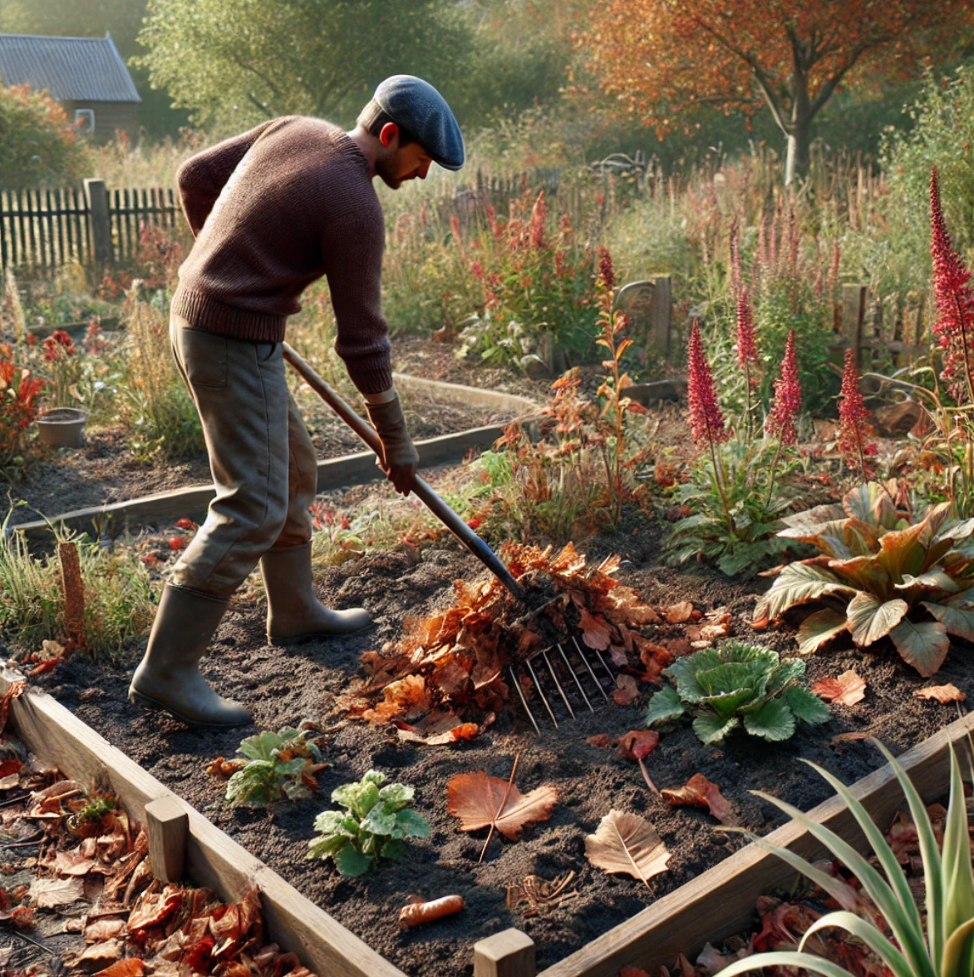As the vibrant colors of fall begin to fade and cooler weather sets in, it’s time to start thinking about preparing your garden for the winter months. Properly winterizing your garden is crucial for protecting your plants, improving soil health, and ensuring a beautiful and productive garden come spring. In this guide, tailored for homeowners across the USA, we’ll walk you through essential steps to Prepare Your Garden for Winter.
1. Clean Up Your Garden for Winter

One of the first steps in preparing your garden for winter is a thorough clean-up. Removing dead plants, fallen leaves, and debris from your garden beds can help prevent pests, fungi, and diseases from overwintering and affecting your garden next year.
- Remove Annuals: Pull up annual plants that have finished their life cycle. These can be composted if they are disease-free, contributing to a healthier garden next spring.
- Cut Back Perennials: Trim back the foliage of perennials to just a few inches above the ground. This helps prevent diseases and makes way for new growth in the spring.
- Rake Leaves: Collect fallen leaves and either compost them or use them as mulch. Leaves left on the lawn can smother grass and lead to fungal problems.
2. Protect Your Garden Soil
Your garden soil works hard all year, so giving it some TLC before winter can pay off in the long run. Protecting your soil helps prevent erosion, retain moisture, and maintain its nutrient content, ensuring a fertile environment for next season’s planting.
- Add Mulch: Applying a thick layer of mulch (about 2-4 inches) over your garden beds helps insulate the soil, protect plant roots, and suppress weeds. Organic mulches like straw, wood chips, or shredded leaves work well.
- Plant Cover Crops: Consider planting cover crops, such as clover, rye, or winter wheat, in empty garden beds. Cover crops prevent soil erosion, improve soil structure, and add nutrients back into the soil.
- Amend the Soil: If your soil is compacted or nutrient-poor, now is a good time to amend it with compost or manure. This will give it time to break down over the winter and be ready for planting in spring.
3. Protect Your Plants from Winter Weather

Some plants need extra protection to survive the winter, especially in areas with harsh climates. Shielding them from freezing temperatures can make a big difference in their survival and growth come spring.
- Mulch Around Perennials: Apply mulch around the base of perennials to insulate their roots from freezing temperatures. Be sure not to pile mulch directly against the plant stems, as this can lead to rot.
- Wrap Vulnerable Plants: Use burlap or frost cloth to wrap around shrubs and small trees that are susceptible to winter damage. This protects them from freezing winds and heavy snow.
- Move Container Plants Indoors: For plants in containers, consider moving them indoors or to a sheltered location like a garage or basement. Tropical and tender plants, in particular, need to be protected from frost.
4. Winter Lawn Care Tips for a Healthy Spring

Your lawn also needs attention before winter sets in. A little care now will help ensure a lush, green lawn next spring.
- Mow and Aerate: Give your lawn one last mow, leaving the grass slightly taller than usual. This helps protect the roots. Aerating your lawn allows water, air, and nutrients to reach the roots more effectively.
- Fertilize: Apply a fall fertilizer to your lawn. This will feed the roots during the winter and promote early spring growth. Look for a fertilizer with a higher potassium content to help your lawn endure the cold.
- Rake Leaves Regularly: Leaving leaves on your lawn over the winter can lead to mold growth and dead patches. Be sure to rake regularly until all the leaves have fallen.
5. Prune Trees and Shrubs in Fall

Fall is an ideal time to prune many trees and shrubs, especially those that bloom on new wood. Pruning helps shape the plants, remove dead or diseased wood, and encourage healthy growth in the spring.
- Remove Dead Wood: Start by cutting out any dead, diseased, or damaged branches. This prevents the spread of disease and reduces the risk of branches breaking under the weight of snow.
- Shape Plants: Prune back overgrown shrubs and trees to maintain their shape and size. Be cautious not to prune spring-flowering shrubs too late in the fall, as this can remove next year’s flower buds.
- Clean Up Prunings: Be sure to clean up all pruned branches and leaves from around your plants to prevent pests and diseases.
6. Winterize Your Garden Tools
Don’t forget about your garden tools! Properly caring for your tools before winter will extend their life and keep them in good working order.
- Clean and Sharpen Tools: Clean dirt and rust off your garden tools. Sharpen blades on pruners, shears, and hoes to keep them effective.
- Oil Moving Parts: Apply a light coat of oil to metal parts to prevent rust. Moving parts on tools like pruners and shears should be oiled to ensure they don’t seize up over the winter.
- Store Tools Properly: Store your tools in a dry place like a shed or garage. Hanging tools on a pegboard or keeping them in a toolbox will keep them organized and ready for spring.
7. Plan Your Spring Garden Now
While you’re preparing your garden for winter, it’s also a good time to start planning for spring. Reflect on what worked well in your garden this year and what didn’t, and use that information to make improvements next season.
- Make a Planting Plan: Sketch out a plan for where you’ll plant vegetables, flowers, and shrubs next year. Consider crop rotation and companion planting to maximize your garden’s health and productivity.
- Order Seeds Early: Start browsing seed catalogs and make a list of what you’d like to grow next year. Ordering seeds early ensures you get the varieties you want.
- Prepare New Beds: If you plan to expand your garden, start preparing new beds now. Remove grass or weeds and amend the soil so it’s ready for planting in the spring.
Conclusion: Prepare Your Garden for Winter
Winterizing your garden is a vital step in ensuring that your plants survive the winter and thrive in the spring. By cleaning up, protecting your soil, caring for your lawn, pruning trees and shrubs, and maintaining your tools, you’ll set the stage for a beautiful and productive garden next year. With these essential tips, your garden will be well-prepared to withstand the cold and emerge healthy and vibrant when the warmer weather returns.

